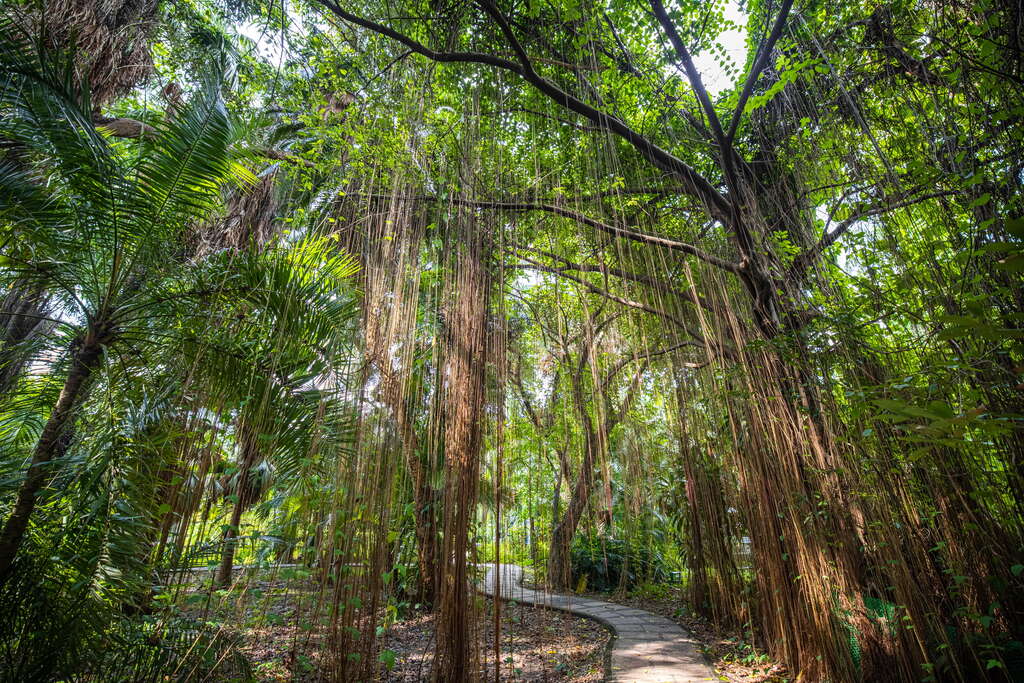Taipei Botanical Garden Introduction
Taipei Botanical Garden is an important place for plant research during the Japanese colonial period, covering an area of approximately 8 hectares. It has preserved experimental research plant species introduced from Taiwan, Japan, mainland China, and Southeast Asia. To this day, the buildings and plant varieties within the garden have far exceeded their past glory, with a collection of around 2000 plant species. Taipei Botanical Garden is divided into areas based on plant classification systems and characteristics, with each section presenting different themes and includes informative signage introducing unique flowers and plants, such as the Lotus Pond, Zodiac Area, Succulent Plant Area, Fern Area, Classic Poetry Plant Area, Folk Plant Area, and Palm Area, among others. With the changing seasons, the plant community varies, and each season has its unique characteristics. If you enter in the afternoon, the light and temperature provide a more comfortable experience. In addition to various plant exhibition areas, there are two designated historical sites located within Taipei Botanical Garden. The Imperial Envoy's Office was completed in 1894 and served as the Governor-General's Office for 25 years, being the only remaining Minnan-style official building from the Qing Dynasty in Taiwan. After experiencing changes during the Qing Dynasty, Japanese rule, and the Republic of China era, it still stands today, narrating stories of the past. The Wax Leaf Pavilion was built in 1924 and was originally the "Wax Leaf Pavilion of the Forestry Department of the Central Research Institute." It was established to develop Taiwan's forest resources by drying wild-collected plants to create "wax leaf specimens" for identification, making it Taiwan's first specimen museum specifically built for storing wax leaf specimens. Since its establishment in 1921, the botanical garden has remained a part of many Taipei residents' memories, suitable for visiting with family and friends throughout the seasons, especially in summer when it serves as an excellent place to escape the heat. Visitors to the botanical garden can first check the Taipei Botanical Garden website to understand the rules, movement patterns, and relevant knowledge about the exhibition areas, working together to protect the garden. (Some information sourced from: Taipei Botanical Garden)















